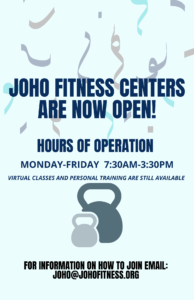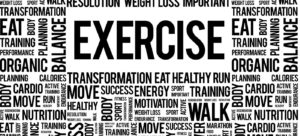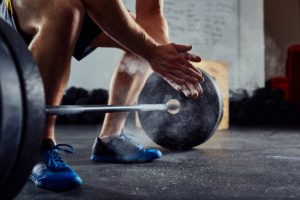Functional workouts have become a popular type of training, but what exactly is a functional movement exercise? The idea behind functional exercise is simple – train to maximize everyday movements outside of your workouts. Basically do workouts that mimic daily activities so your training carries over into life. Here’s a break down the seven different functional movements and how to apply them into your workout routine!
Pull
A pull exercise is one where you pull a load towards yourself or where you pull yourself towards a fixed object.
Test Yourself: The ultimate bodyweight challenge – the pull-up. Complete one either with palms facing in or out. If you’re able to get all the way up, are you shoulders forward? Is your spine rounded or head tucked in? These are also indicators of dysfunctional posture.
Exercise Examples:
- Pull up
- Bent over row
- Upright row
- Renegade row
Progressions:
- Increase the resistance, typically using weights
- Make it unilateral
- Increase the time the muscle is under tensions
- Change your hand position, using a wide, narrow, or neutral grip
Regressions:
- Offload your bodyweight by using a resistance band or assisted pull up machine
- Replicate the movement pattern in a different way, such as a lat pulldown machine
Push
A push/press exercise refers to you pushing a load away from your body or pushing your body away from a fixed surface.
Test Yourself: Get into a high plank position. Slowly lower your body to the ground and push back up. Did you back arch or sag? Did you round your shoulders or drop your head? These are signs of lack of stability in your core and weakness in the stabilizing muscles of your back and pelvis.
Exercise Examples:
- Chest press
- Shoulder press
- Triceps dip
- Push up
Progressions:
- Increase the resistance, typically using weights
- Change the angle at which gravity is working by completing decline variations
- Make it unilateral to engage your core to avoid movement of your trunk
- Change the speed of the movement
Regressions:
- Change the angle at which gravity is working by completing incline variations
- Use your body to form a shorter lever, completing exercises while kneeling instead of standing
Squat
A squat exercise is similar to the action of sitting down on a chair and standing back up again. The squat involves movements at both the hip and the knee joint.
Test Yourself: Stand with feet hip-width apart. Tuck pelvis under hips and lower into squat, shifting weight into heels and ball of foot as you push hips back. Ideally, you would be able to lower into a full squat with your hips almost touching your heels, but getting thighs parallel to the floor is also good. If you feel joint restriction as you go down, you may have a musculoskeletal imbalance, like tight calves.
Exercise Examples:
- Box squat
- Jump squat
- Wall squat
- Pistol squat
Progressions:
- Increase the resistance, typically using weights
- Make it unilateral, squatting with one leg. You can do this by working through pistol squat progressions
- Squat deeper
- Slow down the movement or hold at the bottom of the squat to increase the time your muscles are under tension
Regressions:
- Start with a shallower squat, like a box squat
- Offload your bodyweight using a suspension training equipment, like a TRX band
- Lean back into a wall
- Use a leg press machine to mimic the squat movement pattern to strengthen your legs
Lunge
A lunge exercise refers to a stepping motion of the front leg where both knees bend to absorb the landing.
Test Yourself: Step forward with one foot and lift the heel of the back foot. Bend both knees until right before the back knee touches the ground. Are you knees and ankles stable – or are they shaking around? Does your knee cave in? Are you hunched over and unable to hold your chest or head up? These are all indicators that something is wrong with your lunge.
Exercise Examples:
- Static lunge
- Bulgarian squat
- Jump lunge
- Reverse lunge
Progressions:
- Increase the resistance, typically using weights
- Only use one weight in one hand to add an anti-rotation element to engage your core
- Purposely add a rotation of the upper body during the lunge
- Step into the lunge at various angles, such as multidirectional or reverse lunges
- Perform plyometric variations to increase your power
Regressions:
- Perform a static lunge by removing the stepping action
- Offload your bodyweight by leaning on a surface or using a TRX band
- Decrease the range of motion by performing a partial lunge
Hinge
A hip hinge exercise refers to any exercise where the hip joint moves in and out of flexion, like a hinge.
Test Yourself: One of the toughest movements to master, but because of that, it can be the most rewarding. Stand with feet hip-width apart with a slight bend in both knees. Tuck hips under as you push hips back and bring chest parallel to the ground. If you don’t feel this move in your glutes, then it can reveal a muscle imbalance, typically where the quads are too strong and glutes are too weak.
Exercise Examples:
- Conventional deadlift
- Romanian deadlift
- Hip thrust
- Kettlebell swings
Progressions:
- Increase the resistance, typically using weights
- Increase the speed you perform a hip hinge, such as a clean movement or a kettlebell swing
- Try a more hip dominant exercise than a conventional deadlift, such as a Romanian deadlift
- Slow down the deadlift movement pattern to increase the time under tension
Regressions:
- Raise the starting position of the bar during a deadlift by placing the bar on blocks
- Complete hip hinge exercises in a horizontal position, such as a hip thrust or bridge
Rotation
A rotation exercise is on in which your torso rotates during the exercise.
Test Yourself: Start with a bodyweight wood chop. Stand with feet a bit further than shoulder-width apart, bending knees slightly and keeping your chest up. Lift arms diagonally across your body toward the ceiling and bring them down to the opposite hip. Look at your ankles – are they stable with feet flat on the floor or does the ball of your foot roll up? Can you maintain proper posture throughout the move? If any of these issues occur, a rotational deficiency is likely to blame.
Exercise Examples:
- Woodchopper
- Pallof press
- Russian twist
- Core rotations
Progressions:
- Increase the resistance, typically using weights
- Combine them with another functional movement pattern
- Complete plyometric variations to increase power, such as a med ball slam
Regressions:
- Change the starting position, completing exercises while kneeling instead of standing
Gait
A gait exercise refers to any exercise that involves a walking action during the movement.
Test Yourself: Walk in front of a mirror. How’s your posture? Is your head pushing forward from your collarbones? Are you shoulders rounded forward or does one foot flare out to the side just a bit? These can all signal an imbalance, a problem with hip mobility or a dysfunction in your core.
Exercise Examples:
- Farmers carry
- Suitcase carry
- Sled push/pull
- Overhead walk
Progressions:
- Carry a heavier load
- Increase the distance you walk
- Carry a different load in each arm to add an anti-rotational element
Regressions:
- Carry a lighter weight
- Decrease the distance you walk
These make up the seven movement patterns that your body relies on to get work done every day. And not just during a workout, but throughout your daily life. By learning how to move properly, not only will you help protect your body from injury, you’ll take strides toward reducing undue stress and inflammation.
-Paulina Le
Health Fitness Specialist
Sources:
- https://www.silversneakers.com/blog/7-functional-movements/
- https://www.warriormade.com/content/exercise/functional-movement-patterns/











